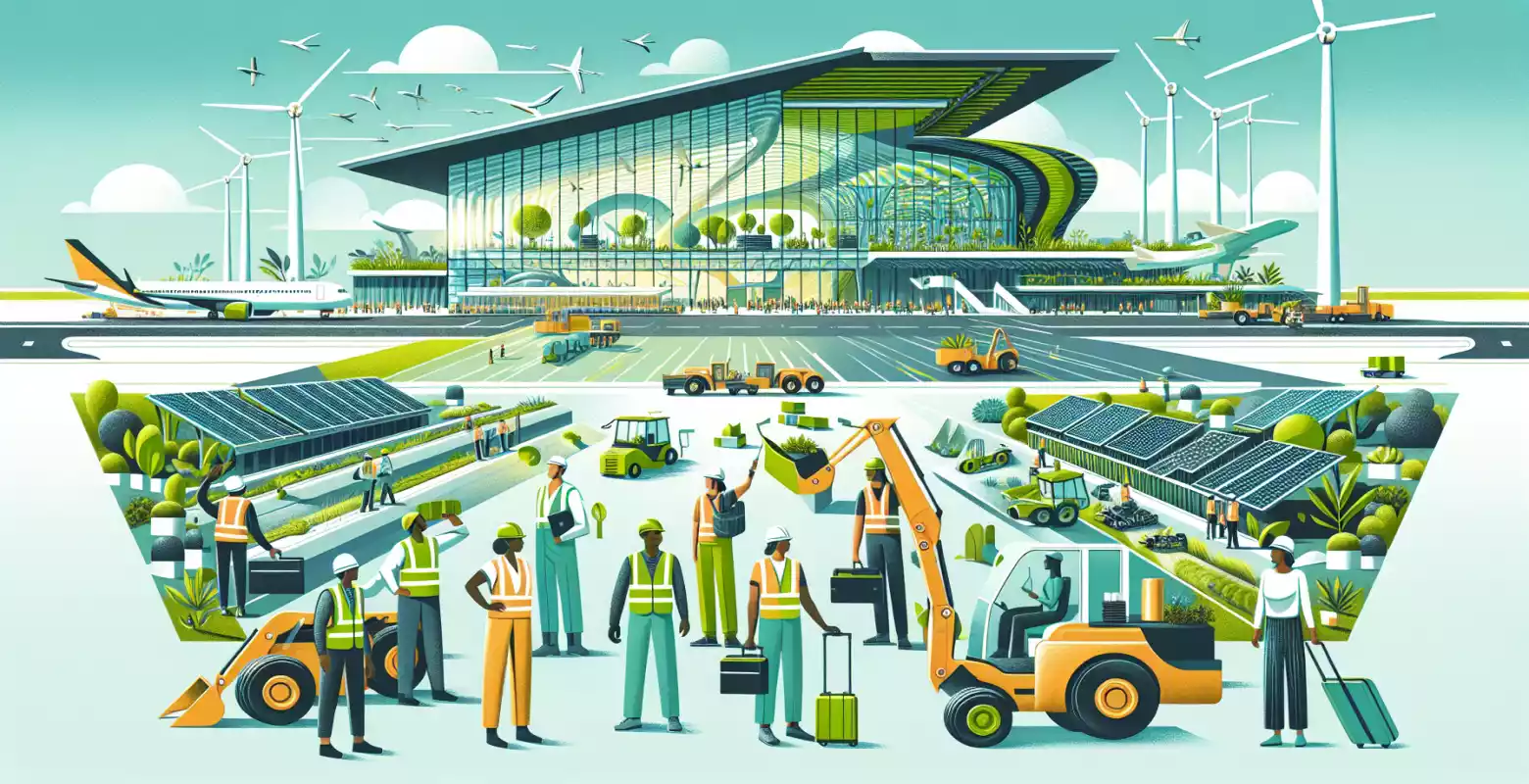Sustainable Development in Airport Construction – New Trends
Introduction
Sustainable development in airport construction is a topic that is gaining increasing importance in the context of global environmental challenges and climate change. With the growing number of air passengers and the expansion of airport networks, it becomes crucial to implement solutions that minimize negative environmental impacts while ensuring operational efficiency and passenger comfort. In this article, we will explore new trends in sustainable airport development, analyzing both the benefits and challenges of their implementation.
Modern Technologies and Materials
The development of technology plays a key role in creating more sustainable airports. The use of modern building materials, such as low CO2 emission concrete, and technologies like smart LED lighting significantly contribute to reducing the carbon footprint. An example is Oslo Airport, one of the first in the world to introduce concrete made from fly ash, which reduced CO2 emissions by 30% compared to traditional solutions.
Energy Efficiency and Renewable Energy Sources
The implementation of renewable energy sources, such as solar and wind energy, is becoming standard in modern airports. For instance, Cochin Airport in India is the first in the world to be fully powered by solar energy, significantly reducing operational costs and greenhouse gas emissions. Additionally, energy management systems enable the optimization of energy consumption, which is not only beneficial for the environment but also economically viable.
Water Management and Waste Management
Efficient water resource management and innovative waste management methods are other key aspects of sustainable airport development. Many airports are investing in rainwater collection and recycling systems and wastewater treatment technologies. Changi Airport in Singapore is an excellent example, where rainwater is used for watering green areas and cooling air conditioning systems.
Integration with the Local Community
An important element of sustainable airport development is integration with the local community. Airport expansion projects increasingly consider the impact on local infrastructure and society, involving residents in decision-making processes and developing strategies to minimize noise and pollution. Schiphol Airport in Amsterdam focuses on cooperation with local authorities and organizations, creating partnerships for sustainable development.
Challenges and the Future of Sustainable Airports
Despite the many benefits that sustainable airport development brings, there are also numerous challenges. The costs of implementing new technologies and infrastructure are often high, which can be a barrier for many airports. Moreover, the necessity of meeting diverse environmental regulations in different countries can be challenging to manage. Nevertheless, growing environmental awareness and social pressure make the future of sustainable airports promising, and innovative solutions will play an increasingly important role in their development.
Conclusion
Sustainable development in airport construction is not just a trend but a necessity in the face of global environmental challenges. Modern technologies, energy efficiency, resource management, and integration with the local community are key elements that can contribute to creating more ecological and efficient airports. The future of sustainable airports depends on continuous investment in innovative solutions and cooperation at many levels, ultimately benefiting both the environment and society.






Number of comments: 0